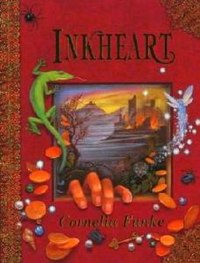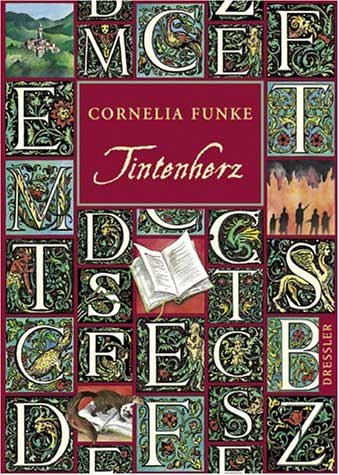 |
| American cover |
Book: Inhkeart by Cornelia Funke
Published: 2003
Description: Meggie lives a quiet life alone with her father, a book-binder. But her father has a deep secret-- he posseses an extraordinary magical power. One day a mysterious stranger arrives who seems linked to her father's past. Who is this sinister character and what does he want? Suddenly Meggie is involved in a breathless game of escape and intrigue as her father's life is put in danger. Will she be able to save him in time? (from Amazon.com)
 |
| Original German cover |
This was my second reading of this book, and both times I've really enjoyed it. It's absolutely wonderfully written--the descriptions are wonderful, and the characters feel amazingly real. Especially the main characters felt like real people, in that their reactions to the often dangerous situations they were thrown into wasn't, "OK, I'm going to be brave and face death to do the right thing." It was, "I'm afraid, because my life is in danger. I don't know what to do!" Many of the characters also develop throughout the book, becoming more able/willing to deal with those situations and conquer their fear of death/pain. A lot of the characters were also a lot of fun, especially Elinor.
My absolute favorite aspect of Inkheart is the love of books that completely permeates it. Each chapter begins with a quote from a book, and books are constantly being referenced. As someone who loves books so much, I love books that portray characters with the same love. It also plays with the border between stories and reality in a lot of ways. But I will say that I also appreciated the fact that books were not shown as the ultimate solution to all problems. Books were good, perhaps even to the point of a certain amount of obsession, but characters who tried to gain strength from books failed. Books did not just solve all problems.
An extremely enjoyable, absorbing tale--well-written and well worth the time put into it.
An extremely enjoyable, absorbing tale--well-written and well worth the time put into it.


